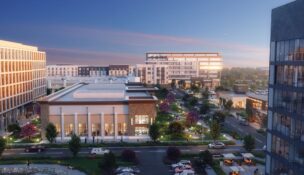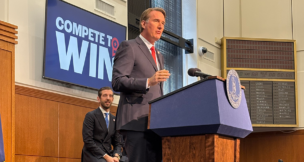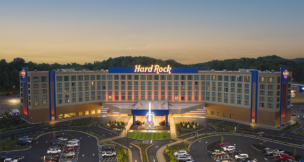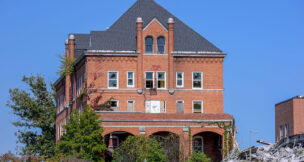The arena of politics
The hotly debated $1.5 billion Navy Hill plan dies
The arena of politics
The hotly debated $1.5 billion Navy Hill plan dies
A historic vote on the biggest economic development proposal in the city of Richmond’s history — the potentially transformative $1.5 billion Navy Hill downtown redevelopment plan that would have included the state’s largest entertainment venue — collapsed in mid-February amid sound and fury as seven of Richmond City Council’s nine members refused to approve the plan.
Council members instead asked Mayor Levar Stoney to issue a new request for proposals for the Navy Hill project, this time including more citizen input on the arena issue and a full appraisal and assessment of the existing Richmond Coliseum.
The failed Navy Hill proposal, revealed to the public and City Council last August, included a $300 million, 17,500-seat arena to replace the now-closed Richmond Coliseum, as well as a luxury hotel, 1 million square feet of commercial and office space, more than 2,500 apartments and 260,000 square feet of retail and restaurant space.
CoStar Group, a commercial real estate analysis company based in Washington, D.C., announced in January it would double its Richmond workforce to 2,000 and move to a 400,000-square-foot building in Navy Hill if City Council approved the project. And VCU Health System upped the ante, saying it would add an office building and hospitality space to the proposed project.
Ultimately, a majority of city councilors, who had heard from hundreds of supporters and opponents over six months, said they were not prepared to support the deal proposed by NH District Corp., a public-private partnership of area business leaders and philanthropists led by Dominion Energy Inc. Chairman, President and CEO Thomas F. Farrell II. The councilors cited financial worries as well as concerns about the project’s lack of transparency.
Had the Navy Hill project been approved, the city would have taken out $350 million in nonrecourse bonds to fund the arena, with a special tax district diverting future sales-tax revenue from the state to pay back $600 million to bondholders over the next 30 years. Navy Hill developers promised to source $900 million in private funds for the first phase of the arena’s construction.
Proponents painted a picture of future prosperity at no risk to city taxpayers. But some city residents questioned the need for the arena and the project’s funding mechanism. In December, the nine-member Navy Hill Development Advisory Commission appointed by City Council to review the proposal concluded that “the Navy Hill project poses a risk to [the] city General Fund and school funding,” and a majority “did not find the publicly financed $300 million arena a sound and reasonable public investment in the redevelopment of downtown.”
Richmond’s own history also played a role; the name Navy Hill comes from what once was a prosperous African American neighborhood in the same location as the proposed development. In the 1950s and ’60s, highway construction obliterated more than 500 homes in Navy Hill, displacing about 1,000 families.
The Rev. Ben Campbell, a Richmond spiritual leader and expert on poverty and race, says he’s heard many community members question whether the wealthy business leaders who touted the Navy Hill redevelopment — particularly Farrell — “are benevolent or have ulterior motives.”
“I tend to view them as benevolent,” Campbell says. “I know these people personally. But it is definitely a paternalist action by a very few wealthy people that feel, in some sense, that they would save the city. What seems not to have been learned over the past 50 years is the futility of this kind of salvation.”
S. Waite Rawls II, a former banker and recently the president of the American Civil War Museum Foundation, has a far different view.
“One thing that strikes me is that there is no one else who could pull off a project this big — not the city, not any one current developer. It takes a group of community-spirited people with the means and know-how to do it,” Rawls says.
Stoney was a solid champion of the Navy Hill proposal.
Navy Hill, he says, would have produced 21,000 jobs, including 9,000 permanent positions, and would have produced needed revenues for city schools and minority businesses while creating “a catalyst to increase funding for education, housing, transit and other core services.”
With such a full-throated endorsement, “Stoney and the Stoney administration have risked a lot of political capital,” endangering Stoney’s re-election campaign this fall as well as his aspirations for higher office, says Richard J. Meagher, a political science professor at Randolph-Macon College who writes the blog RVA Politics.
Despite the outcome, however, the Navy Hill project was Central Virginia’s biggest project announced in 2019 — and is likely to influence the city’s future.
e















